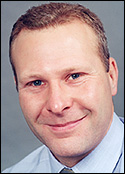Mar 15, 2005A three-month U.K. trial of a pharmaceutical RFID and bar code tagging system aimed at validating medicines at the point of dispensing has proved a success, although any commercial implementation remains up to a year away, according to the company behind the pilot.
"The results have shown that mass serialisation of medicines combined with a simple scanning process can greatly reduce both errors and illegal medicines before they are dispensed to the patient," says Ian Rhodes, CEO at Aegate, the Cambridge, England, company that developed and tested the system.
Announced in November (see Six U.K. Drugmakers Pilot RFID), the trial involved 44 pharmacies, each fitted with Aegate's RFID and bar code reader, and specially tagged or bar-coded products from six drug manufacturers including Merck Generics UK, Merck Pharmaceuticals, Novartis, Schering Health Care and Solvay.
During the pilot, which ran to the end of January, each of the 44 pharmacies scanned every product they dispensed. In total more than 180,000 individual pharmaceutical items were scanned at the point of dispensing, with around 20,000 of those carrying an RFID tag containing a unique number added for the trial and another 1,000 carrying a label with a serialised bar code, either 2D Data Matrix or RSS 14, encoded with a unique number. For the specially tagged items, Aegate used read-only 13.56 MHz tags from UPM Rafsec that conform to the ISO15693. Each of the other 160,000 or so other pharmaceutical items were dispensed from the pharmacists' normal inventory, and each item was identified using the existing standard EAN 13 bar code that all drugmakers and pharmacists use to identify products.
Although scanning all the items before they were dispensed provided value, including alerts to check product batch numbers and assurances that the correct medicine was being dispensed, the company discovered additional benefits from the scanning the specially tagged or labeled items.
"Whereas the scan of the current EAN 13 bar code can highlight a product where the batch may have to be manually checked for any batch recall, unique item tagging can automatically deliver information about whether that specific item is part of a batch that has been recalled," Rhodes says.
Participating pharmacies included pharmacy chains, independent retail pharmacies, hospital pharmacies and doctors' dispensaries. When dispensing any product during the trial, the pharmacists scanned it using the multiprotocol scanner, developed and deployed by Aegate. The device could read both bar codes labels and RFID tags and could display product information via a built-in screen. For items bearing a unique ID number, the scanner could display information such as confirmation that the product was a genuine (and not counterfeit), had not passed its expiration date and was not subject a recall
Around 56 in every 10,000 dispensed medicines in the U.K. are associated with an error involving dispensing procedures and practice, and human checks are relied on to catch the error. Adding the scan to the dispensing process promises to provide another level of checking, and Aegate says that 70 percent of pharmacists in the trial found the visual display of product details to be the most useful aspect of scanning.
Each scanner used a broadband network connection to communicate with a central database managed by Aegate. During the trial, the process of checking and displaying information at the scanner took, on average, about 1 second, according to Aegate. When Aegate deliberately extended that time to 10 seconds, the company says, the process was still unobtrusive and didn't elicit any complaints form the pharmacists that it was interrupting their workflow.
The trial included around 1,000 dummy counterfeit products that consisted of empty all-white tagged packages, Aegate says. Each pharmacy in the trial was given a carton of 20 or so of these dummy products. The participants were asked to scan four of these items picked at random each day. Aegate tracked these reads and the ability of the system to correctly recognize the dummy packages. Each time a pharmacist scanned such a counterfeit product, the Aegate scanner refused to authenticate the product, and therefore, 100 percent of these 'counterfeit' packs were successfully identified, says Aegate.
During the trial, several drug companies initiated actual recalls, although not for any of the specially tagged or labeled items. Even so, the Aegate scanner provided real-time notices to the pharmacists as they scanned the affected items, enabling the identification of batches of counterfeit Cialis and Reductil that had turned up the inventory of many of the participating pharmacies. That ability to check drugs being dispensed was one that registered highly with the participating pharmacists. According to Aegate, 60 percent of the pharmacists who received a special notice said it was one of the most useful aspects of scanning.
Currently, most U.K. pharmacies are informed of product recalls by fax. During the trial, Aegate observed that several pharmacies had not received faxed recall information or had failed to read the faxed notifications they had received regarding those recalls.
Having proved the value of the trial system, Aegate says it is working to have its system accepted by U.K. government regulators, pharmaceutical companies, pharmacies and vendors of patient-medication record (PMR) software, which pharmacies use to manage their patient dispensing records and print prescription labels. Aegate's goal is to have its system commercially available within the next 12 months. In the meantime, the company is developing software to connect its system with PMR software from Hadley Healthcare, Cegedim Rx, System Solutions and other companies.


